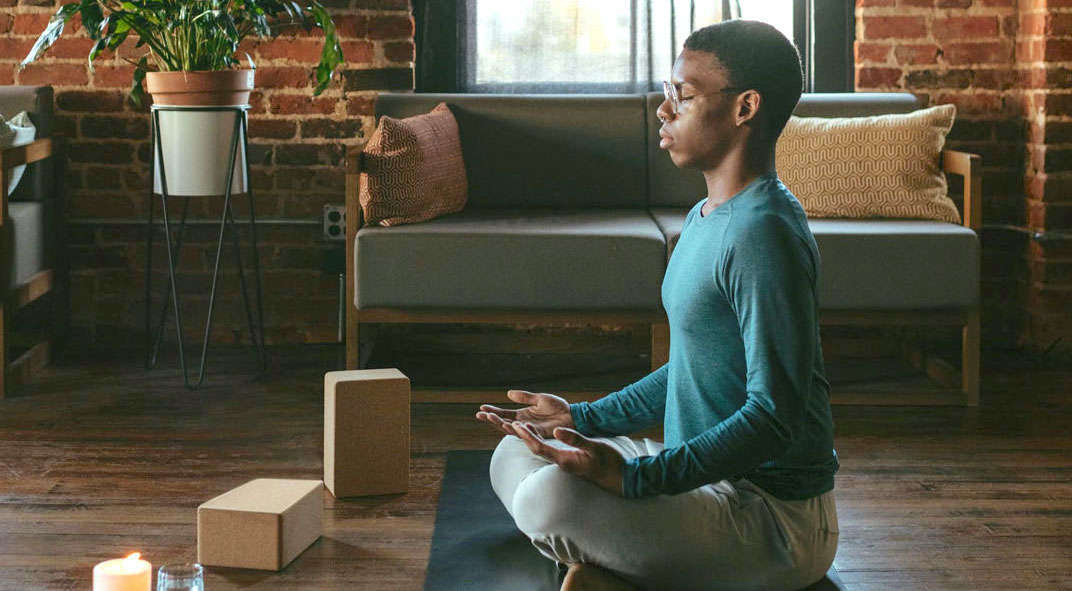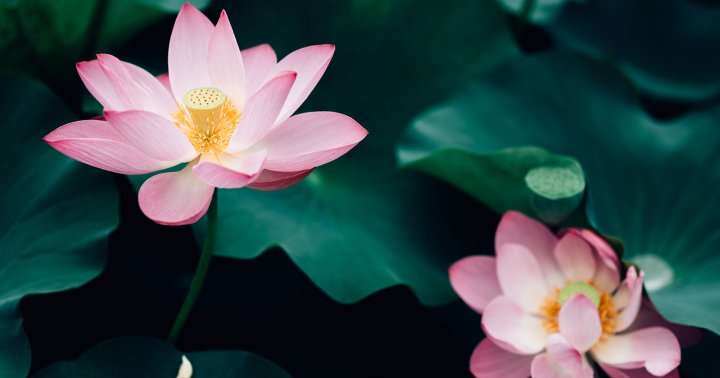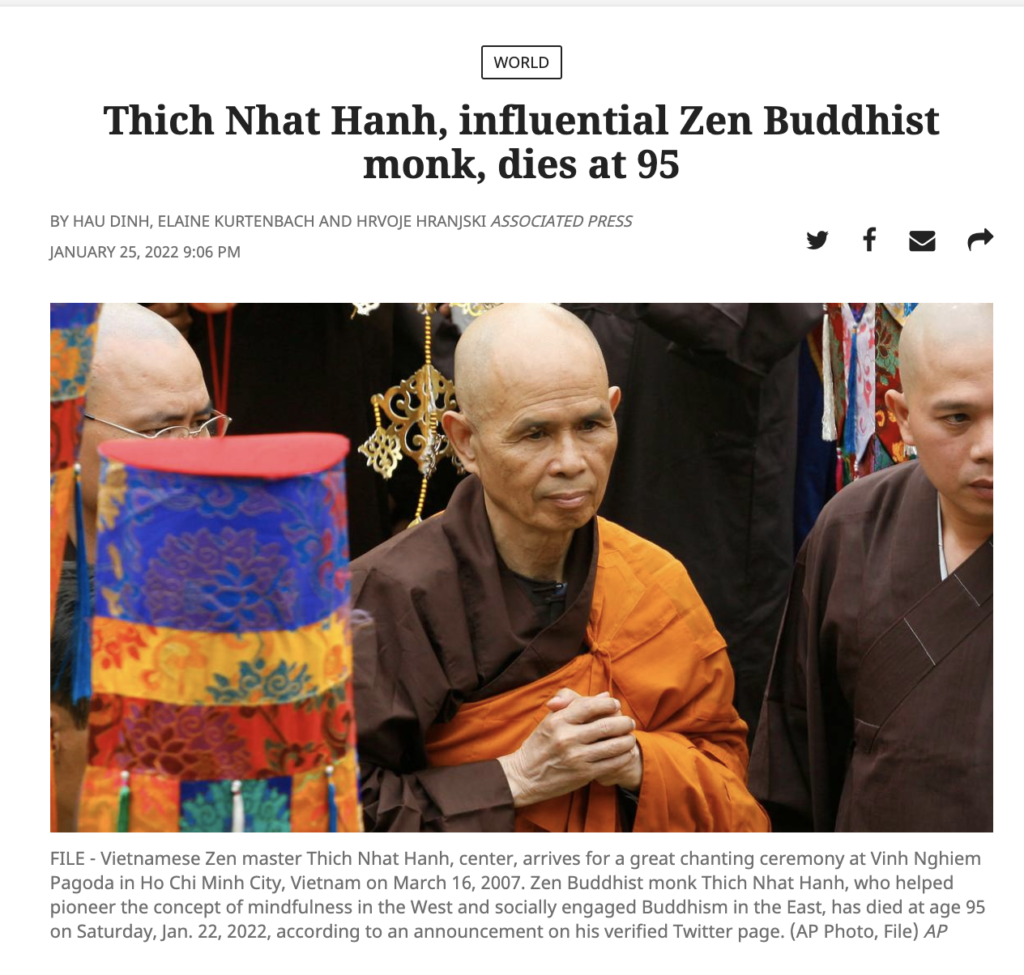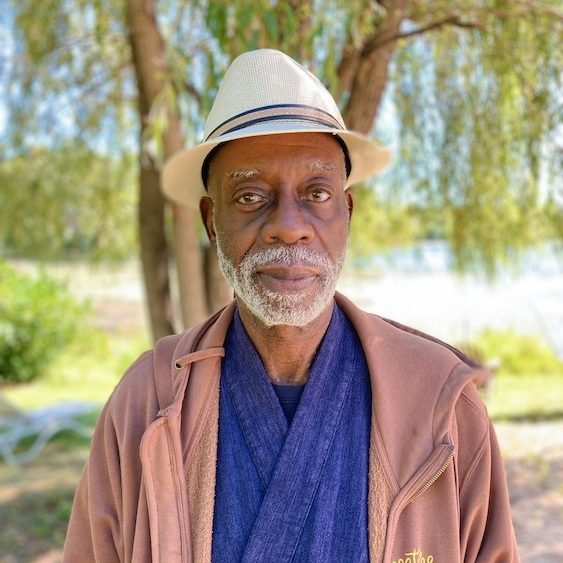12 Steps for a DIY At-Home Retreat
Wherever you are, and no matter how much time you have, you can commit to this fundamental part of a Buddhist practice. The post 12 Steps for a DIY At-Home Retreat appeared first on Tricycle: The Buddhist Review.

 Photo by Windows
Photo by WindowsEver since Lord Buddha instituted the annual three-month “rains retreat,” an intense period of practice for monastics taking shelter from monsoons, every great master has deemed retreat an essential part of a committed dharma practitioner’s life. But what is a retreat exactly? To go on retreat means to withdraw to a quiet or secluded place for a period of time and dedicate oneself to prayer and meditation. A retreat can be of any length, but traditionally it is for at least a few days. This withdrawal from worldly life and embrace of solitude and quiet is seen as essential to spiritual deepening, especially the opening of the heart to joy, love, compassion, and evenness.
It is in times of crisis and hardship that we feel the need for retreat more acutely, such as this current time of pandemic and strife. The more the world is consumed by trouble and noise, the more our true hearts yearn for peace and quiet.
Unfortunately, not everyone has the favorable conditions necessary to do long-term retreats or the financial means to travel to isolated retreat centers, if travel is even possible given COVID restrictions or conflict. The good news is we don’t have to travel to the Himalayas to find solitude and we can benefit greatly from shorter periods of retreat, even as little as one day a month. We don’t have to go anywhere; we can find the quiet we need wherever we are, right now. In fact, COVID lockdowns and restrictions are a great opportunity to turn an adverse situation to our benefit.
What follows is a 12-point guide to using our homes as retreat locations and making the most of what little time we have to achieve a level of tranquillity and peace that will greatly enrich our lives.
1. Set a retreat boundary.
For the duration of your retreat, you do not go outside this boundary. Generally speaking this should be the boundary of your home. Include your yard or balcony so that you can sit in the sun and get fresh air and look up at the sky between sessions. Widely revered teacher Kyabje Dudjom Rinpoche (1904–1987) once said that though we may go for retreat in the isolated mountains, our minds often remain in town. Alternately, we could be in town but our mind is embracing solitude as if it were in the mountains. This means that our attitude and motivation are more important than location. We don’t need to go off to some remote hermitage; our homes are perfectly good retreat places.
2. Set a duration.
Generally speaking, the minimum duration is 24 hours, from dawn to dawn the following day. However we have to adapt to the actual conditions of our life. For example, if you are a stay-at-home parent and have school-aged children, you could do a retreat while the children are at school on one or more days of the week.
What makes this a retreat rather than just intermittent practice? It’s the commitment to the retreat over an extended period of time. If we are really serious about practice there is always a way to engage in some form of retreat. We just need to use our creative intelligence to figure out what will work for us. No matter what happens, stay in retreat for the entire duration. Don’t finish early, not even by ten minutes.
3. Choose a simple practice.
It is best to start with silent sitting meditation and learning about and contemplating Buddhist fundamentals, such as impermanence, cause and effect, compassion, and shunyata. Committing to an overly complex practice when first starting out is unwise. Keep it simple and focus on the things that you can do right now without having to learn anything new. The Buddha recommended only two practices during retreat: meditation and contemplation. To ease yourself into retreat, start with an audio recording of a relaxed guided meditation. Your contemplation can be based on any of the Buddha’s teachings, but it is best to get to the heart of things and avoid complicated philosophy. The most important point is to read or listen to the teachings with an open mind, to reflect on or contemplate those teachings to gain some understanding, and then to apply those teachings to daily life.
“This isn’t an extreme sport.”
One teaching that is a great foundation for retreat is the Four Thoughts That Turn the Mind to Dharma, which is basically a contemplation of impermanence. Understanding impermanence opens the door to the true nature of mind. Therefore, though these teachings are considered preliminary, there are no more important contemplations, no matter where we are on the path. In fact, when long term practitioners feel stuck or complain that their practice isn’t deepening, the reason is usually because they have not truly taken impermanence to heart.
4. Set the number of sessions.
Begin with just one or two short sessions per day. Then increase to four longer sessions per day. About two hours is a good length. This isn’t an extreme sport. A little bit of practice done with enthusiasm, energy, and joy is better than days and days of practice undertaken as though it were a test of endurance.
5. Embrace silence.
Turn off all devices—phone, computer, TV, stereo etc. If you can’t turn off your phone, then tell friends and family ahead of time that you will be in retreat and to not disturb you unless it is an emergency. Put the phone out of view. If you live with others, explain to them that you will not be engaging in conversation for the duration of the retreat and invest in earplugs or noise cancelling headphones to screen out their noise. Silence is an essential component to retreat.
6. Take Genyen vows for the duration of the retreat.
Genyen vows are part of the Tibetan Buddhist tradition. There are eight vows:
Do not kill. The fullest interpretation of this vow is to be vegetarian or vegan for the duration of the retreat. This is about placing compassion (and mercy) at the center of our lives. Do not deceive yourself or others. In retreat, as there is no one else there to talk to or deceive. In that context this vow means to be honest about what we are feeling, thinking and doing and to be honest with ourselves. Do not take what is not freely offered. Essentially, don’t steal. This is about being mindful of our greed and craving. In retreat, this means to simply be aware when we want things that we do not need or have not been offered. Do not engage in sexual contact or stimulation. As with above, this is about reducing desire and craving for pleasure. This is more about our mind space than about any moral judgement of sex or pleasure. If we are constantly seeking pleasure our minds cannot be quiet and we cannot be still. Do not use alcohol or intoxicants. This is about allowing the mind to settle into its natural condition and for us to maintain the ability to see our mind clearly, without our perception being clouded or distorted. The exception to this rule is if alcohol or intoxicants are ingredients of an essential medication (such as cannabis for chronic pain). It is also a good idea to reduce or cut out caffeine and sugar as they affect the mind quite strongly. If we want to see our mind clearly, at the very least we should limit our intake of alcohol, intoxicants, caffeine, and sugar. Change your clothes. This vow asks us to wear simple clothing reserved for practice or retreat only. This can be as simple as wearing a maroon meditation shawl during practice sessions, or indeed for your entire retreat time. It might be reserving a favorite t-shirt or socks just for retreat. The point of this is to help us step into the retreat mindset by donning retreat clothing. Change your name. For the duration of the retreat we use our refuge name, or at least try to remember the meaning behind our refuge name while we are in retreat. If we don’t have a refuge name, we can choose a name for ourselves. It should be something that inspires us to connect humbly and gently with our spiritual nature. Modifying our dress and name facilitates the letting go of who we currently believe we are, and opens us to the possibility that we are not what we think we are, specifically that our identities and sense of self are truly empty and insubstantial. Changing your mind. This refers to renouncing worldly life and livelihood. In terms of livelihood, this vow means that we don’t do any paid or mundane work during our retreat. Beyond that, it means to remind ourselves of impermanence so that we turn our mind away from pointless things and activity toward meaningful activity such as dharma practice.7. Ask a retreat mentor to answer any important questions that arise.
The mentor can either be your dharma teacher or a trusted and experienced practitioner who has done numerous retreats before. If the retreats are short don’t contact the retreat mentor during the retreat unless your questions are urgent. Retreat is a time for learning how our own minds work and becoming comfortable with our minds.
8. Start small and slow and build up capacity and confidence over time.
On the retreat session (whether it’s an hour, day, or weekend), simply settle into doing all of the above. Choose an easy meditation practice, read dharma books, and gently contemplate the fundamentals. Stay within your comfort zone until you settle into a rhythm. It’s a marathon, not a sprint. And doing retreat is about softening the heart and mind. It’s not about hardening yourself for retreat, but softening into it.
Each retreat session, build a little more routine and structure into your day. Eventually, develop more or longer session periods and stay consistent: Practice the a the same times, in the same place, and for the same duration. Consistency and persistency is the key. Turn these weekend retreats into a long term and sustainable practice.
9. Be honest with yourself about your capacity.
Go slow. By going too big too quickly, you run the risk of developing an aversion and not wanting to practice again. Accept where you are and build from there. Not even Siddhartha Gautama was Shakyamuni Buddha to begin with. Young Mila became Milarepa over time. Yeshe Tsogyal started out as an ordinary Tibetan girl and became the first fully enlightened being in the Tibetan tradition. We all start somewhere. We have to build our capacity and confidence slowly.
10. Have no expectations!
Be patient, kind, and gentle with yourself. Practicing self-compassion and love in retreat is vital. Totally relax between sessions. If you need to rest, then rest. Resting in stillness and quiet in-between sessions is just as important as the session time itself as this is when the practice filters down from our heads to our hearts and deepens. When obstacles arise, remember that the majority are mind-made, so relax. There is nothing to fear in the mind. Obstacles are inevitable; don’t feel disappointed when they arise.
11. Arouse joy at the start of each session.
We begin with joy so that the sessions become something that we look forward to and savor rather than dread and approach as a chore. Joy makes retreat wonderful rather than laborious. (Read this article about embracing joy.)
12. Remember what a tremendous opportunity and privilege it is to be able to practice the dharma and to do a retreat.
Countless beings do not have this opportunity so savor it, enjoy it and make the most of the time.
If you are looking for more inspiration, there is a concise teaching on retreat by Jetsunma Tenzin Palmo that is available for free online in the book Three Teachings.
The most important thing to remember about retreat is to keep a relaxed and open-hearted attitude. If we relax and keep our hearts open, even short periods of retreat can be deeply transformative. All the best and good luck!

Get Daily Dharma in your email
Start your day with a fresh perspective

Explore timeless teachings through modern methods.
With Stephen Batchelor, Sharon Salzberg, Andrew Olendzki, and more
![]()
Thank you for subscribing to Tricycle! As a nonprofit, we depend on readers like you to keep Buddhist teachings and practices widely available.
This article is only for Subscribers!
Subscribe now to read this article and get immediate access to everything else.
Already a subscriber? Log in.
Pema Düddul is the Buddhist chaplain in the University of Southern Queensland’s Multi-Faith Service and the co-director of Jalu Buddhist Meditation Centre in Australia.

 AbJimroe
AbJimroe 
































